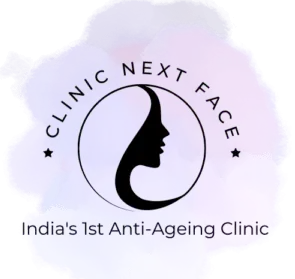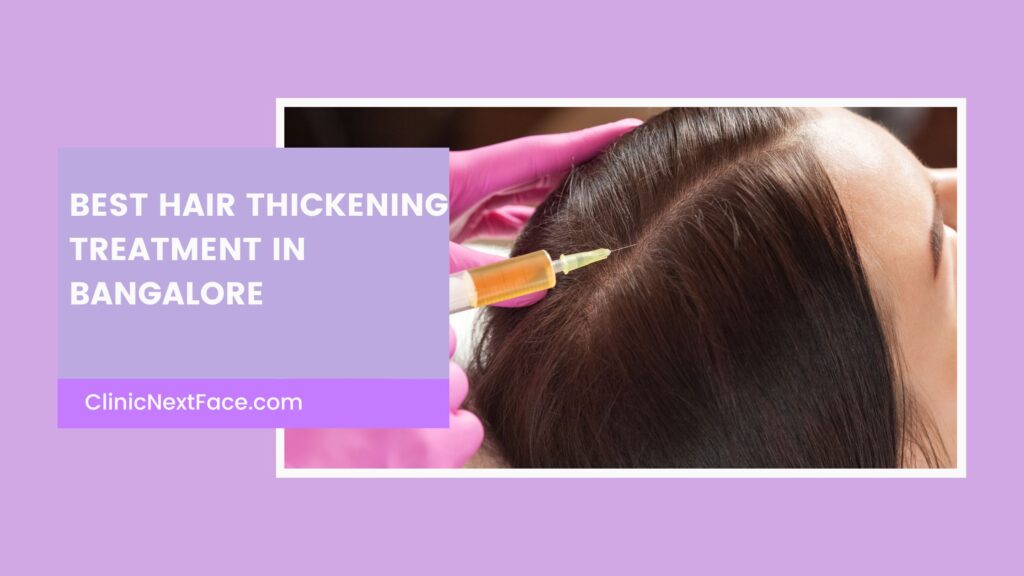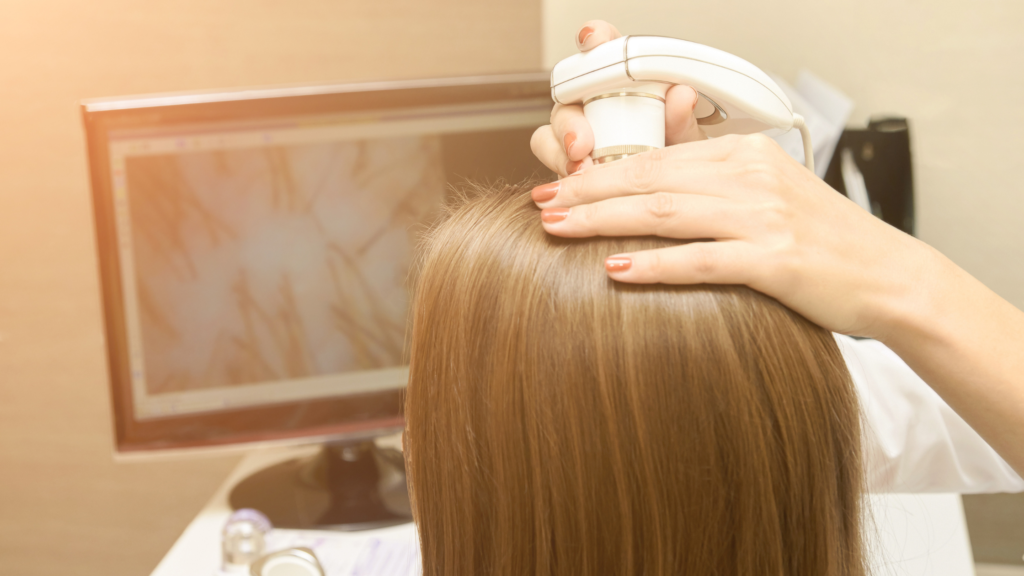Table of Contents
ToggleTL;DR
-
Hair plays a significant role in building confidence and personality, with 81% of women feeling confident when their hair looks great and 72% finding it empowering.
-
Hair thinning is a common concern caused by various factors such as genetics, hormonal imbalance, nutritional deficiency, aging, etc.
-
Common signs of hair loss include gradual thinning on the head, sudden hair loosening, patchy or circular bald spots, and scaling patches.
-
Different types of hair loss conditions include Androgenetic Alopecia, Telogen Effluvium, Anagen Effluvium, Cicatricial Alopecia, and Hypotrichosis.
-
Various hair thickening treatment options include non-surgical treatments like Scalp Micropigmentation and Topical Serums and minimally invasive treatments like PRF Therapy, Mesotherapy, QR678, and GFC Hair Treatment. Surgical options like FUE and FUT Hair Transplant are also available. Factors for choosing the right treatment include the severity of hair loss, budget, personal preferences, and lifestyle.
81% of women feel confident when their hair looks great, and 72% say their hair is empowering.
Hair is one of the most predominant signs of beauty and one of the first things that people notice about you. It plays a dominant role in building up your confidence and overall personality. Long, strong, thick, voluminous, and shiny hair can transform your look, capture people’s attention and make you feel confident. Whereas, a receding hairline and consistent hair thinning can degrade your overall look and gradually lowers your self-esteem.
You may even avoid stepping outside fearing what people would say about your hair thinning. Are you stressed about your severe hair thinning and want to get rid of it immediately? At CNF in Bangalore, you can do the best hair thickening treatments to solve this issue. Our experts examine your hair thinning condition and customize the right treatment accordingly.
Understanding Hair Loss
Before treating hair thinning, you should understand its common causes, types and how to identify its signs.
Common Causes of Hair Thinning
Here are the most common causes of hair thinning:
Genetics
Genetics is the most common cause of hair loss among people of all genders worldwide. So, you can lose hair only because of your parents suffering from severe hair loss.
Alopecia Areata
Alopecia Areata, an autoimmune disease, attacks your hair follicles that cause hair thinning. Never take medicines without consultation to cure this disease.
Scarring Alopecia
In scarring alopecia, inflammation destructs the hair follicles, which never regrow hair.
Hormonal Imbalance
Polycystic Ovarian Syndrome(PCOS) forms cysts in your ovaries, which causes hair loss.
Thyroid
Excess or decreased functioning of the thyroid can cause hair thinning. You can also see hair coming out in clumps when brushing or combing.
Nutritional Deficiency
The deficiency of protein, iron, biotin, and zinc nutrients can cause hair loss.
Childbirth
As a mother, you may have severe hair fall after a few months of delivering a baby because of hormonal changes during and post-pregnancy.
Aging
Aging slows down hair growth. Your hair follicles stop hair growth at a certain age, which causes thinning. The hair also loses color as you grow older.
Identifying the Signs of Hair Loss
Hair thinning may occur in various ways depending on the causes. You can have hair loss suddenly or slowly, which affects your scalp and even your full body. Once you the major signs of hair loss below, take steps to cure it:
Thinning on Head Top
Gradual thinning is a common type of hair loss that occurs in many people as they age. Hair tends to start receding at the hairline on foreheads among men. In older women, a common hair thinning symptom is a receding hairline, i.e., frontal fibrosing alopecia.
Sudden Hair Loosening
An emotional/physical shock can loosen the hair. Gentle tugging may take out the hair. S7ch type of hair loss tends to cause temporary overall hair thinning.
Patchy/Circular Bald Spots
People lose hair in patchy/circular bald spots on the scalp, eyebrows, or beard. Your skin may pain or itch before your hair starts falling out.
Scaling Patches Spread Across Scalp
It is a symptom of ringworm, which may come with swelling, redness, broken hair, and oozing.
Types of Hair Loss Conditions
Here are the most common types of hair loss:
Androgenetic Alopecia
Androgenetic Alopecia, also called male/female pattern hair loss, is the most common type of hair loss, which is hereditary and curable with medicines or surgeries.
Telogen Effluvium
Telogen Effluvium develops when many follicles on your scalp enter the hair growth cycle’s resting phase, known as telogen. However, the next growth stage doesn’t start, which causes hair to fall across the scalp without the growth of new hair.
Anagen Effluvium
Anagen Effluvium is quick hair loss caused due to medical treatment, like chemotherapy, which destroys cancer cells. However, they may stop the production of hair follicles on your scalp and other body parts.
Cicatricial Alopecia
Cicatricial alopecia, also called scarring alopecia, is a hair loss condition where inflammation ruins hair follicles and forms scar tissues in their place. Hair doesn’t regrow after scar tissue formation.
Hypotrichosis
Hypotrichosis is a genetic condition in which extremely less hair grows on the body and scalp. Babies born with hypotrichosis may have normal hair growth initially. After a few months, their hair starts falling out and sparse hair replaces them. Many hypotrichosis patients get bald by the age of 25.
Hair Thickening Treatment Options
Here are the different types of hair thickening treatment options you can do to thicken your hair:
Non-Surgical Treatments
Scalp micro pigmentation, also called hair tattoo, covers thinning hair or bald spots without surgeries. The experts use thin needles to make mini dots of pigment/color on your scalp. The treatment covers bald spots and makes a shaved head look. The results stay for at least 4 years.
As scalp micro pigmentation involves no anesthesia or surgery, you can quickly resume everyday activities. Your scalp may have some redness that stays for many years. Avoid wetting your scalp, hot showers, sun exposure on the scalp, sweating, or staying in a hot environment.
Topical Serums
Application of topical serums won’t boost your hair growth but promote follicle production to significantly improve your scalp condition. A topical serum can enhance your hairline appearance and create an impression of a head full of hair.
You can apply a topical serum on your hair whenever you want and experience no side effects. If you see any side effects and your hair keeps getting thin, you should stop applying it and consult us to get an advanced hair-thickening treatment.
-
- Minimally Invasive Treatments
PRF Therapy
PRF is an advanced non-surgical treatment that involves using cell-growth factors to regenerate inactive hair follicles via wound healing technology. Such growth factors are crucial for tissue regeneration and healing. PRF-treated hair follicles immediately get reinvigorated and start growing new hair. Your hair will get stronger and thicker.
As hair growth is a slower process, PRF therapy results are visible in 3 to 6 months. This treatment has no downtime or recovery. The total number of required sessions depends on the level of your hair loss and the desired outcomes.
Mesotherapy
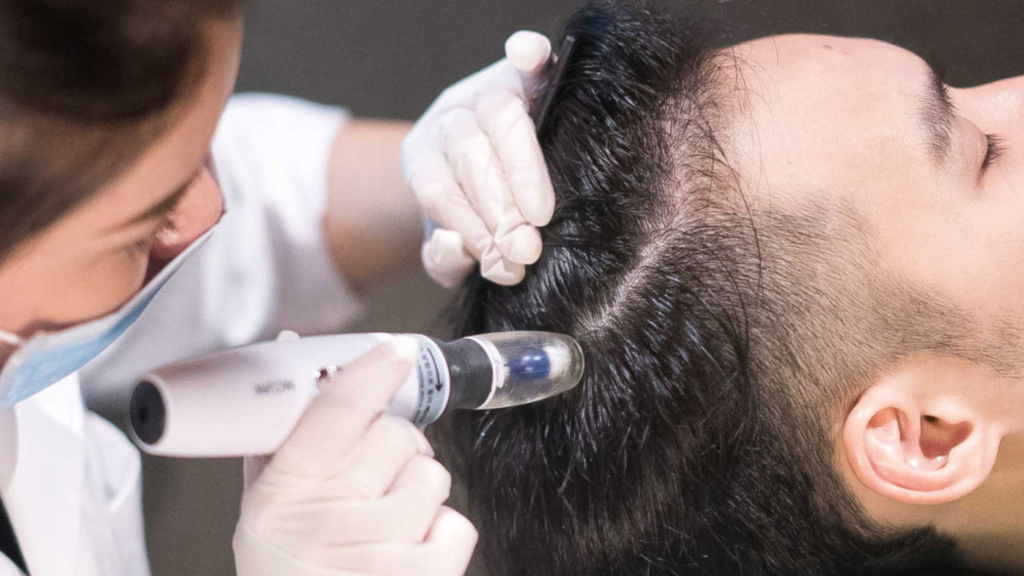
Mesotherapy is a non-surgical hair regrowth treatment that adds vitamins and improves hair regrowth flow. It treats bald patches and activates follicles to deliver the desired hair growth results in both men and women. The injection of a vial, consisting of vital components, can restore or revitalize your hair.
Since the injection gun is used to inject the vial, monotherapy treatment takes approximately 10 to 30 minutes, depending on the bald area or hair thinning. 5 sessions are required to deliver the desired results. As mesotherapy hair treatment is minimally invasive, it has no downtime. You can resume daily activities immediately after the session.
QR678

QR678 is a non-surgical hair regrowth technique that promotes growth while controlling hair loss. This treatment regenerates hair follicles by signaling your cells to enter the anagen stage. QR678 represents a Quick Response to a disease that had no cure earlier. Hair loss won’t be a concern anymore because of the treatment’s outstanding results.
You can see improvement in hair loss conditions after the first session. We will suggest the right number of treatments depending on your hair loss severity. Many patients require 5 sessions to deliver the desired outcomes, every session is scheduled at an interval of 3 weeks. The treatment doesn’t need recovery because you can resume normal activities immediately.
GFC Hair Treatment
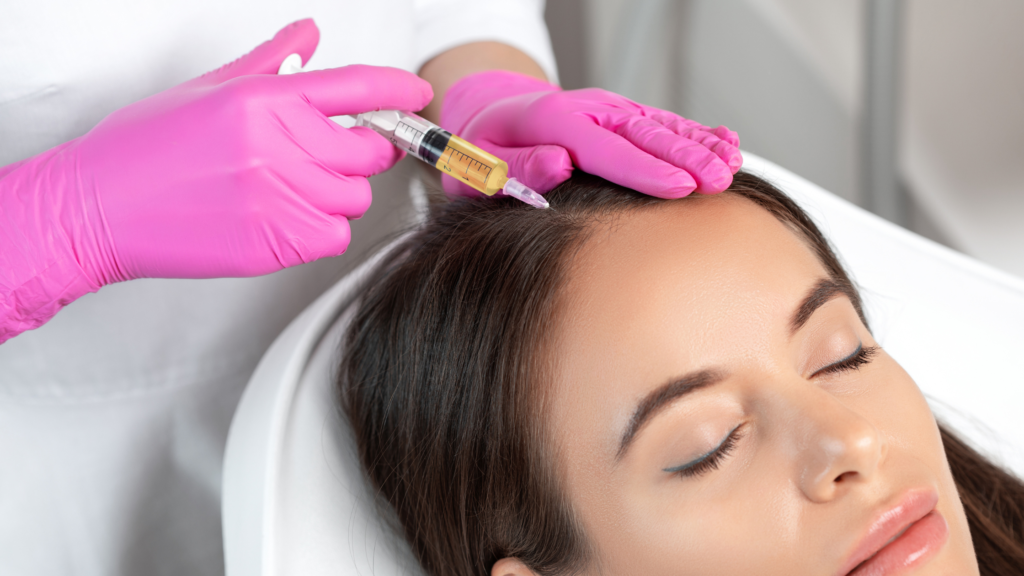
Growth Factor Concentrate (GFC) hair treatment uses your blood and injects a highly concentrated growth factor composition in the neck and scalp to grow hair. The GFC hair treatment acquires multiple growth factors from blood, such as insulin-like and epidermal growth factors. It controls hair fall and makes your hair thick and look voluminous.
You need approximately 3 to 4 sessions to get the desired results. The side effects, such as swelling and pain, get cured after a week of treatment
PRP Hair Treatment
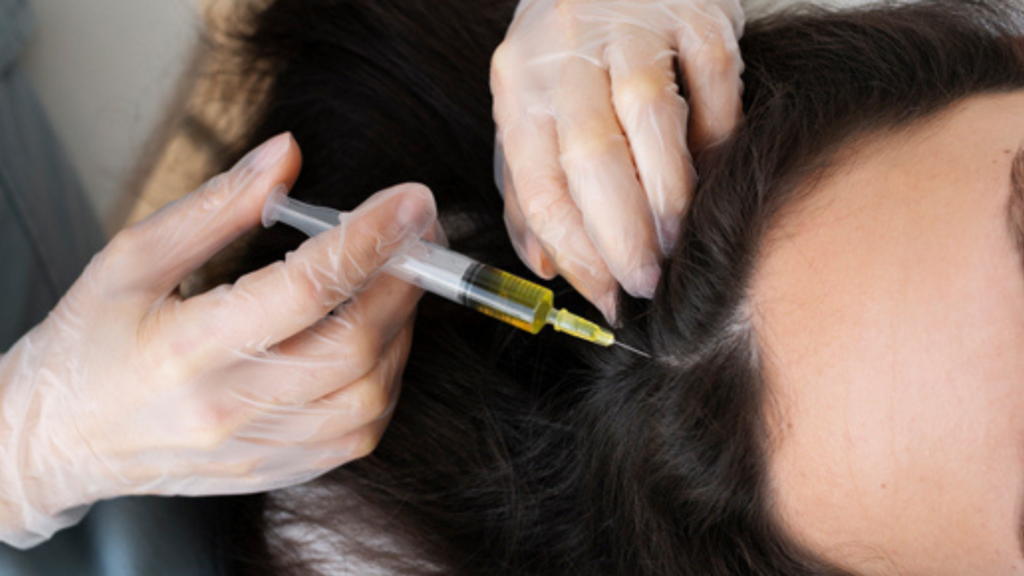
Platelet-rich plasma (PRP) hair treatment uses your body’s rich blood plasma to promote the growth of your hair follicles. As the PRP treatment boosts stem cells and collagen production, it promotes hair growth. This treatment can restore the hair loss caused due to stress, weather fluctuations, poor lifestyle, and diet regimen.
Every session takes almost a month. You get the desired results as you do more and more sessions. The procedure has no downtime and thus, you can resume your normal activities immediately.
Dermapen Microneedling

Dermapen microneedling treatment can reverse various types of hair loss in both males and females. This treatment gets to your existing hair follicles and gives you healthier and thicker hair. It promotes angiogenesis, nourishes the bulb of every hair, and passes hormones to activate and maintain hair growth.
Dermapen 4 can make thousands of microchannels on your skin that pass active ingredients much deeper into your skin, which the underneath cells absorb. Sometimes, the needles’ mechanical action breaks scar tissues damaging and covering the hair follicles. The excellent needles get into the deeper layers of the hairline with almost no pain and downtime. You don’t even need to apply a numbing cream for a pain-free experience.
-
-
Surgical Treatments
-
Hair Transplant Procedures
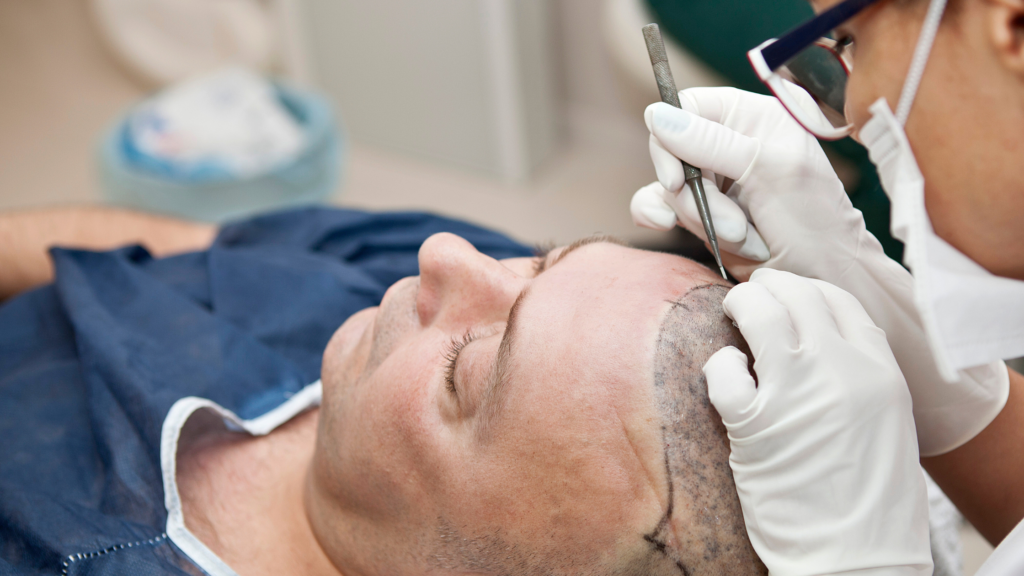
Hair transplants are surgeries that move hair to the bald or scalp’s thinning areas. The experts take grafts or small skin pieces from body parts containing healthy hair. They shift the grafts to your scalp’s hairless parts. As the transplanted skin heals, it keeps growing your hair. It takes almost a year to see the full results. Multiple touch-ups are required to get a natural-looking result. The recovery process depends on the type of transplant you do.
Follicular Unit Extraction (FUE) Technique
FUE is a hair transplant technique performed by taking out hair follicles from the skin and moving them to other body parts with no or thin hair. FUE is usually performed in 2 to 4 sessions on many days. As it is an outpatient process, you can get back home after every session. You can get back to your regular activities in 4 to 5 days after the treatment. In the first 7 to 10 days after the FUE technique, you can experience major side effects and wait for them to diminish before getting back to work.
Follicular Unit Transplantation (FUT) Technique
FUT is a surgical process in which hair follicles are implanted in a strip and transplanted from the back of your head to areas with visible balding. Then, hair grows naturally in an average of 1 to 4 hair strands per bundle. The newly transplanted hair usually looks more natural as hair naturally grows in 1 to 4-strand units. You will get natural hair after FUT treatment that grows naturally at the rate of 1 cm/month. The recovery time of FUT is 10 to 12 days.
Choosing the Right Hair Thickening Treatment
Here are the factors you should consider to choose the right hair-thickening treatment:
The Severity of Hair Loss
Before opting for any hair thickening treatment, consider your hair loss condition. Our experts can check your level and causes of hair loss to suggest the right treatment.
Budget Cost and Considerations
Different hair thickening treatments have different costs, outcomes, and recovery times. Set your budget and know what you can get in which treatment at what time frame to choose the right treatment.
Personal Preferences and Lifestyle
Knowing your preferences is extremely important to choose the right treatment. You should go for the treatment that suits your lifestyle. Otherwise, you won’t be able to follow the proper post-care instructions.
What Makes CNF the Best at Hair Thickening Treatment in Bangalore?
CNF has award-winning doctors and uses the latest advanced technologies to solve all your hair-thinning problems. Our expert can examine your hair-thinning issues at the core and deliver the best solutions at any cost. Please visit our clinic anytime if you want us to take full care of your hair. Fill out the form on your website to book an appointment with us.
Talk To Our Hair Loss Expert Today!
No Obligations! Just jump on a quick call with our hair loss expert and know what kind of treatment will suit you the best.
Either way you will get some actionable tips to reach your hair goals faster.
